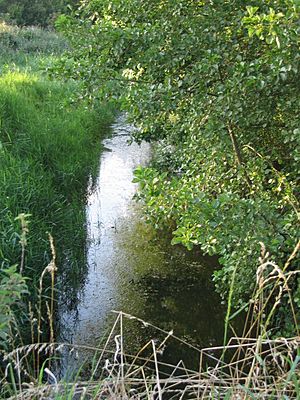Priory Meadows, Hickling facts for kids
| Site of Special Scientific Interest | |
 |
|
| Area of Search | Norfolk |
|---|---|
| Interest | Biological |
| Area | 23.9 hectares (59 acres) |
| Notification | 1986 |
| Location map | Magic Map |
Priory Meadows, Hickling is a really special place in Norfolk, England. It's a large area of land, about 23.9 hectares (59 acres) (that's like 59 football fields!), that's protected because of its amazing nature. It's officially known as a Site of Special Scientific Interest (SSSI) because it's home to unique plants and habitats.
This beautiful meadow is also part of even bigger protected areas. These include the Broadland Ramsar site (which protects important wetlands worldwide) and a Special Protection Area for birds. It's also part of The Broads Special Area of Conservation, which helps protect important natural habitats across Europe.
Contents
What Makes Priory Meadows Special?
Priory Meadows, Hickling, is a unique type of grassland. It grows on soil that is very damp and acidic. This soil is called peat, which is made from partly decayed plants. Because of these special conditions, the meadow has a rich and diverse collection of plants.
A Home for Unique Plants
The way this land is looked after is very traditional. This helps many different kinds of plants to grow and thrive. You can find various herbs here, like tormentil and marsh cinquefoil. These plants are well-suited to the damp, peaty soil.
Waterways and Aquatic Life
Running through the meadows is a network of small channels or ditches. These are called dykes. The dykes are also full of life, with many different kinds of aquatic plants. Aquatic plants are those that grow in water. They add to the rich variety of nature found at Priory Meadows.
Why is it Protected?
Priory Meadows was officially made a Site of Special Scientific Interest in 1986. This means it's recognized as one of the best examples of its kind in the country. Protecting places like this helps to make sure that these special habitats and the plants that live there can survive for a long time. It's important for nature and for future generations to enjoy.

